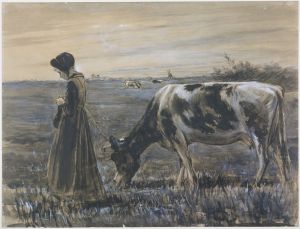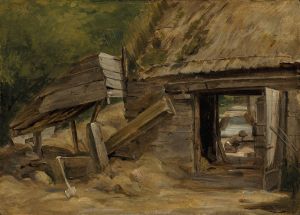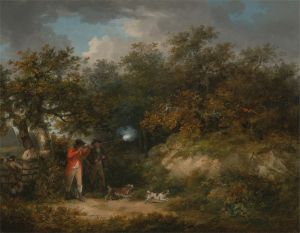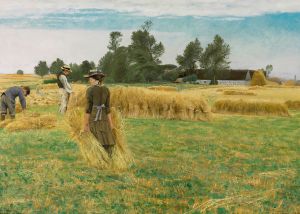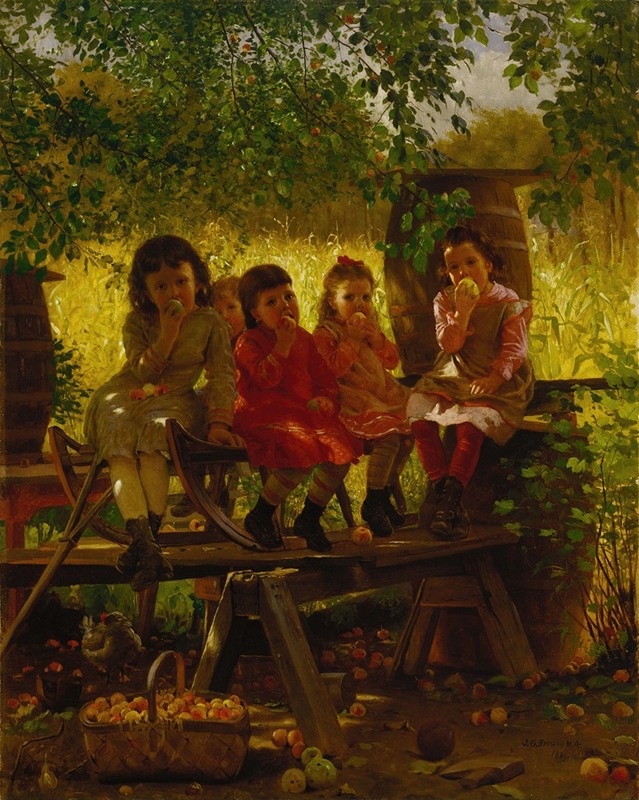
The Cider Mill
A hand-painted replica of John George Brown’s masterpiece The Cider Mill, meticulously crafted by professional artists to capture the true essence of the original. Each piece is created with museum-quality canvas and rare mineral pigments, carefully painted by experienced artists with delicate brushstrokes and rich, layered colors to perfectly recreate the texture of the original artwork. Unlike machine-printed reproductions, this hand-painted version brings the painting to life, infused with the artist’s emotions and skill in every stroke. Whether for personal collection or home decoration, it instantly elevates the artistic atmosphere of any space.
John George Brown (1831–1913) was a British-born American painter renowned for his depictions of everyday life, particularly scenes featuring children. His work often captured the innocence and charm of youth, set against the backdrop of 19th-century American life. One of his notable works is "The Cider Mill," which exemplifies his style and thematic focus.
"The Cider Mill" is a painting that reflects Brown's interest in rural and domestic scenes, a common subject in his oeuvre. While specific details about the painting's creation, such as the exact year it was painted, are not widely documented, it is consistent with Brown's body of work from the late 19th century. During this period, Brown was particularly focused on genre paintings that depicted the everyday lives of children and working-class individuals.
In "The Cider Mill," Brown likely portrays a scene set in a rural cider mill, a place where apples are processed into cider. This setting provides a glimpse into the agricultural practices of the time and highlights the importance of cider production in rural communities. The painting would typically feature children engaging with their surroundings, perhaps helping with the cider-making process or playing nearby. Brown's attention to detail and his ability to capture the nuances of children's expressions and postures would bring the scene to life, emphasizing the innocence and playfulness of youth.
Brown's technique often involved a realistic style with a focus on light and color, which he used to create a warm and inviting atmosphere. His paintings were known for their narrative quality, often telling a story through the interactions and expressions of the subjects. In "The Cider Mill," this narrative element would be evident in the way the children interact with the environment and each other, providing insight into their daily lives and the social dynamics of the time.
John George Brown's work, including "The Cider Mill," was well-received during his lifetime. He was a prominent figure in the American art scene and was associated with the National Academy of Design, where he served as a member and exhibited his work regularly. His paintings were popular among collectors and the general public, appreciated for their charm and the way they captured the spirit of American life.
Today, Brown's paintings are held in various public and private collections, and they continue to be studied for their artistic merit and historical significance. "The Cider Mill," like many of his works, offers a window into the past, providing a visual narrative of a bygone era and the simple pleasures of rural life. Brown's ability to convey emotion and tell a story through his art ensures that his work remains relevant and appreciated by audiences today.






